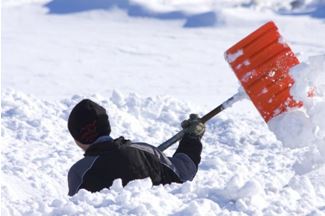Common snow removal injuries and medical emergencies include overexertion of muscles, falling, lower-back injuries, broken bones, and heart-related problems. The arms and hands are the most common area for bone fractures, while adults over 55 were more than four times likely to have heart-related symptoms while shoveling, compared to younger people.
Preventing falls includes those that occur while workers are removing snow from rooftops or other elevated surfaces. To keep workers safe, employers should develop plans for snow removal methods that do not involve workers being on rooftops.
Safe working tips include:
1. Dressing appropriately – Wearing layers of clothing allows for both ventilation and insulation. Keep the head warm, as this is where a lot of body heat escapes.
2. Pace yourself and take breaks – Begin removing snow early to avoid heavy, packed snow.
3. Drink plenty of fluids to avoid dehydration.
4. Safe Equipment – Snow blowers can be a big help to avoid manually moving snow, but be sure to provide employees with a refresher on safely using this equipment. Ensure equipment is in good working condition.
5. Use proper body mechanics – If shoveling must be done, use the legs to do the lifting. Avoid bending at the waist and twisting the back to throw snow. Move smaller amounts of snow, lift with the legs, and walk to where you want to dump the snow.
6. Avoid eating a heavy meal immediately before shoveling, as this can put an extra load on your heart.
Additional Information and Resources:
OSHA Hazard Alert – Fall and Other Hazards to Workers Removing Snow from Rooftops and Other Elevated Surfaces
WebMD – Shoveling Snow Injures Thousands Each Year
National Safety Council
If you have questions, please contact Angie Mackley, Risk Control Consultant, at amackley@murrayins.com.
Share this Post

